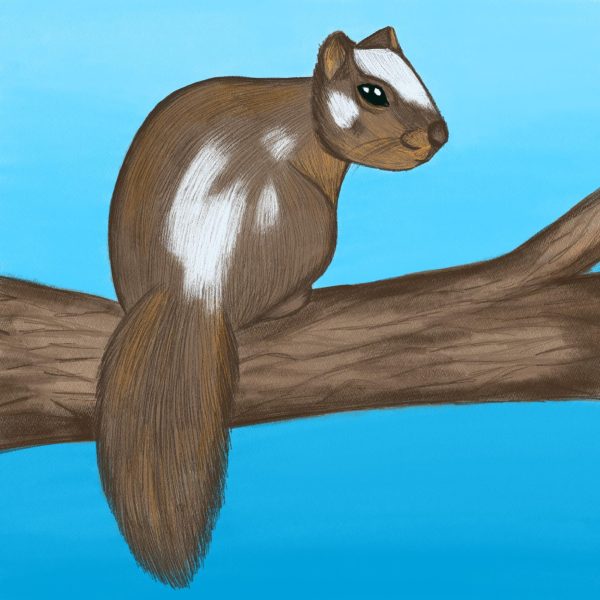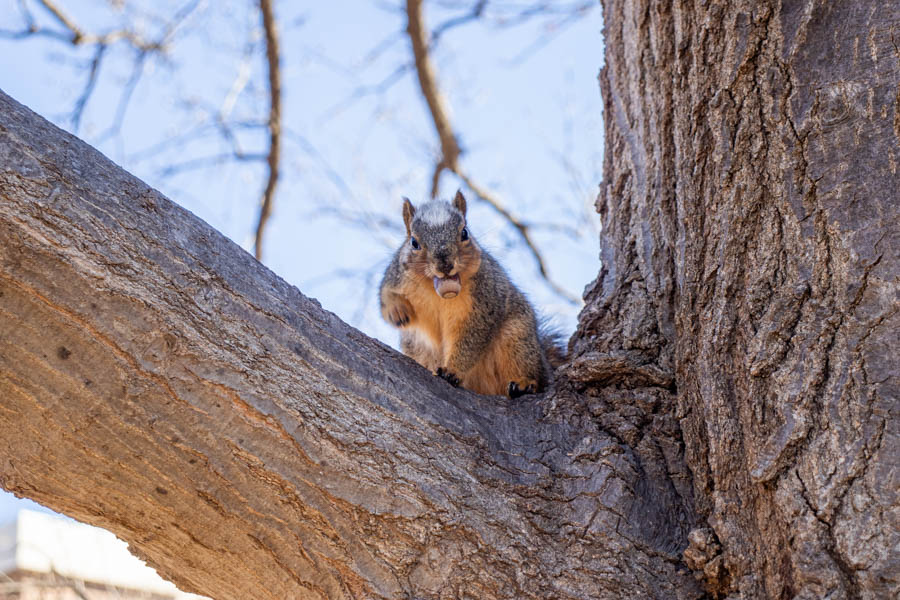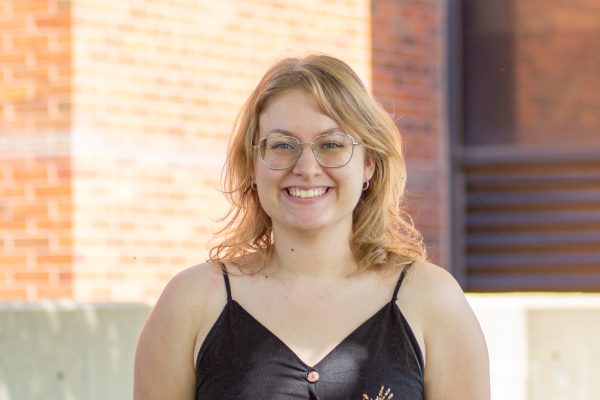A unique male piebald fox squirrel has made a surprising appearance perched in the oak trees on campus near the northeast corner of Morrison Hall and near Jabara Hall.
Biology graduate student Jessica Baughman was having a picnic with her mother on campus by Hubbard Hall when she made the surprising discovery.
“I looked over and, in between the steel horse statue and one of the giant oaks, the squirrel is just running and I was like, ‘Oh, that is the piebald squirrel,’” Baughman said.
In simple terms, piebaldism means there is a lack of pigment in certain areas of fur on an animal, resulting in white or lighter colors. This condition is most commonly seen in mammals and often creates shorter life spans for the animals as they are a higher target for predators. However, according to associate professor James Beck, the squirrel may live longer because he’s in an urban environment.
Beck is an associate professor of biological sciences with the Fairmount College of Liberal Arts and Sciences. Baughman approached him after the sighting, and while scholarly squirrel research isn’t his forte, he said he scoured the few scientific sources available to find additional information on the rarity of piebald squirrels.
“Just based on the amount of relative lack of discussion of piebald squirrels that I could find online, I would say it’s pretty uncommon,” Beck said. “I did look at the scientific literature for estimates and I could not find any actual numbers.”
The University of Iowa had a celebrity piebald eastern gray squirrel named ‘Pinto Bean’ on their campus in 2022 which was eventually taxidermied and placed on their campus as a sort of “mascot” after its death.
Beck is the owner of a piebald housecat, a common genetic occurrence in cats, while Baughman had the rare experience of seeing a piebald deer in the wild.
“It was a really cool occurrence for me, and my sister is kind of obsessed with them,” Baughman said.

While both Beck and Baughman are particularly focused on botany and plant life, they hope this discovered squirrel may inform a different type of research with the help of citizen scientists and students on campus. They hope to get a better idea of the home range of this animal to see where it lives on campus.
While Beck and Baughman said they want to encourage students to observe this rare and “beautiful” animal, people should also be respectful of the animal and its space. That includes not feeding it and other campus wildlife.
“It’s fun to have wild animals on campus, but we need to minimize the amount that we semi-domesticate them,” Beck said. “We are not encouraging people to do anything … besides just trying to get pictures, just keep your eyes out.”
While their nickname for the creature has been “Snowball” for the past couple of weeks, Beck and Baughman said they hope students will gain an appreciation for the creature and they encourage others to come up with names for him on their own.
If you have seen this animal anywhere on campus and wish to aid Beck in his research of the home range of this animal, he can be reached via phone at (316) 978-6063, email at [email protected] or can be found in his office at Hubbard Hall. He hopes with the help of students and photos taken of Snowball that they can build a “map” of where this unique squirrel lives on campus.
“Hopefully it can be a nice distraction for students as finals week comes up,” Beck said.





